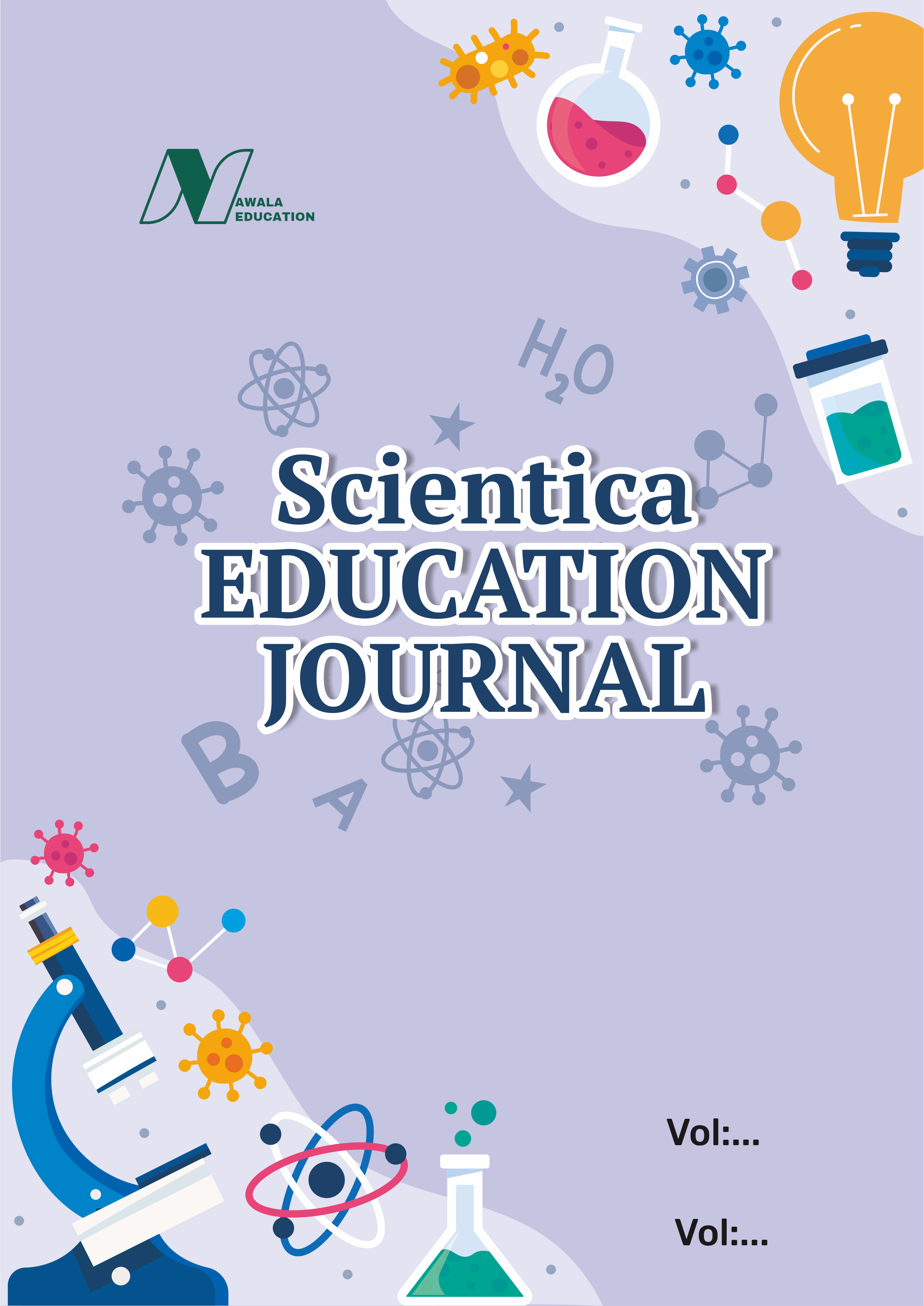Assessing The Reliability of Module For Adolescence Psychological Well-Being In Malaysia Using The Application Of Sidek Model
DOI:
https://doi.org/10.62872/1y9e0j56Keywords:
Module of adolescence psychological well-being in Malaysia, Sidek module development model, psychological well-beingAbstract
In this study, a module of adolescence psychological well-being in Malaysia using the application of Sidek module development model was developed by the Counselling and Psychology Association of Malaysia (PEKAMARA) to optimize psychological well-being o teenagers aged 13-25 years. The assessment of the adolescence psychological well-being in Malaysia module was meticulously crafted following a systematic approach encompassing needs analysis, objective formulation, content development, strategy selection, module production, implementation, and evaluation. Rigorous psychometric measures adapted from the Sidek module were employed to assess the validity and reliability of the adolescence psychological well-being module. The findings reveal a good level of validity, with a coefficient of 0.80, indicating that the module has successfully targets and addresses the specific psychological challenges faced by teenagers in this age group. Furthermore, the overall reliability coefficient was impressively high, with an Alpha Cronbach value of 0.93, underscoring the module's consistency in measuring desired outcomes across different facets of psychological well-being. The Sidek module development model leverages evidence-based practices from cognitive-behavioural therapy, positive psychology, and mindfulness, offering tailored interventions to enhance stress management, emotional regulation, resilience, and overall life satisfaction among adolescents. By integrating these methodologies, the module of adolescence well-being in Malaysia provides comprehensive support to address the complex mental health needs of young individuals during their formative years. This study contributes to advancing the field of mental health interventions for adolescents by demonstrating the efficacy of a structured and systematic approach in promoting positive psychological outcomes. The results highlight the importance of integrating theoretical frameworks into practical modules that are not only effective but also adaptable to diverse cultural contexts and individual needs.
Downloads
References
American Psychological Association. (2020). Publication manual of the American Psychological Association (7th ed.). https://doi.org/10.1037/0000165-000
Beck, A. T. (1976). Cognitive therapy and emotional disorders. International Universities Press.
Borg, W. R., Gall, J. R., & Gall, M. D. (1993). Applying educational research: A practical guide (3rd ed.). Longman.
Corey, G. (2000). Theory and practice in group counselling (5th ed.). Brooks/Cole Thomson Learning.
Corey, M. S., & Corey, G. (2002). Groups: Process and practice (6th ed.). Brooks/Cole.
Cronbach, L. J. (1990). Essentials of educational measurement. Prentice Hall Inc.
Dryden, W., & Neenan, M. (2004). Rational-emotive counselling in action (3rd ed.). Sage Publications. https://doi.org/10.4135/9781849209925
Hofmann, S. G., Asnaani, A., Vonk, I. J., Sawyer, A. T., & Fang, A. (2012). The efficacy of cognitive behavioural therapy: A review of meta-analyses. Cognitive Therapy and Research, 36(5), 427-440. https://doi.org/10.1007/s10608-012-9476-1
Jamaludin Ahmad. (2008). Module and pengendalian bimbingan kelompok. Penerbit Universiti Putra Malaysia.
Jamaludin Ahmad. (2002). Kesahan, kebolehpercayaan, dan keberkesanan modul program maju diri ke atas motivasi pencapaian di kalangan pelajar-pelajar sekolah menengah negeri Selangor (Validity, reliability, and effectiveness of advanced self-development module on achievement motivation among secondary school students in Selangor). Unpublished doctoral dissertation, Universiti Putra Malaysia.
Kabat-Zinn, J. (1990). Full catastrophe living: Using the wisdom of your body and mind to face stress, pain, and illness. Delacorte.
Kabat-Zinn, J. (2003). Mindfulness-based interventions in context: Past, present, and future. Clinical Psychology: Science and Practice, 10(2), 144-156. https://doi.org/10.1093/clipsy.bpg016
Khoury, B., Lecomte, T., Fortin, G., Masse, M., Therien, P., Bouchard, V., ... & Hofmann, S. G. (2013). Mindfulness-based therapy: A comprehensive meta-analysis. Clinical Psychology Review, 33(6), 763-771. https://doi.org/10.1016/j.cpr.2013.05.005
Lyubomirsky, S., Sheldon, K. M., & Schkade, D. (2005). Pursuing happiness: The architecture of sustainable change. Review of General Psychology, 9(2), 111-131. https://doi.org/10.1037/1089-2680.9.2.111
Mohd Majid Konting. (2004). Kaedah penyelidikan pendidikan. (Educational research methods). IDEAL, Universiti Putra Malaysia.
Neenan, M. (2009). Developing resilience: A cognitive-behavioral approach. Routledge. https://doi.org/10.4324/9780203868336
Othman Mohamed. (2000). Prinsip psikoterapi dan pengurusan dalam kaunseling [Principles of psychotherapy and management in counseling]. Penerbit Universiti Putra Malaysia.
Sharifah Alwiah Alsagof. (1981). Pengenalan pengajaran individu dengan tumpuan khas kepada modul pengajaran dan modul pembelajaran [Introduction to individualized teaching with emphasis on teaching and learning modules]. Jurnal Pendidik dan Pendidikan, 3(1), 54-62.
Sidek, M. N. (2018). Developing the Sidek model: A systematic approach for module development. Journal of Educational Development, 42(3), 321-335. https://doi.org/10.1007/s10833-018-9328-4
Sidek Mohd Noah & Jamaludin Ahmad. (2005). Pembinaan Modul: Bagaimana membina modul latihan dan modul akademik (Module construction: How to construct training modules and academic modules). Penerbit Universiti Putra Malaysia.
Sidek Mohd Noah. (2000). Rekabentuk Penyelidikan (Research design). Institut Pendidikan dan Pembelajaran Jarak Jauh (IDEAL), Universiti Putra Malaysia.
Seligman, M. E. P., & Csikszentmihalyi, M. (2000). Positive psychology: An introduction. American Psychologist, 55(1), 5-14. https://doi.org/10.1037/0003-066X.55.1.5
UNICEF. (2011). Statistics by Area/HIV/AIDS. Retrieved January 9, 2011, from http://www.childinfo.org/hiv_aids_orphansestimates.php
UNICEF Malaysia. (2012). The Malaysia Child Act 2001. Retrieved from http://www.unicef.org/malaysia/protection_4209.html
World Health Organization. (2020). Adolescent mental health. Retrieved from https://www.who.int/news-room/fact-sheets/detail/adolescent-mental-health
Downloads
Published
Issue
Section
License
Copyright (c) 2024 Mohd. Shahrul, Dayang Nurina Nazihah, Dayang Nurafiqah, Raudhah Ahmadi, Johari Md Salim, Saidatul Nadia (Author)

This work is licensed under a Creative Commons Attribution-ShareAlike 4.0 International License.

This work is licensed under a Creative Commons Attribution-ShareAlike 4.0 International License.











